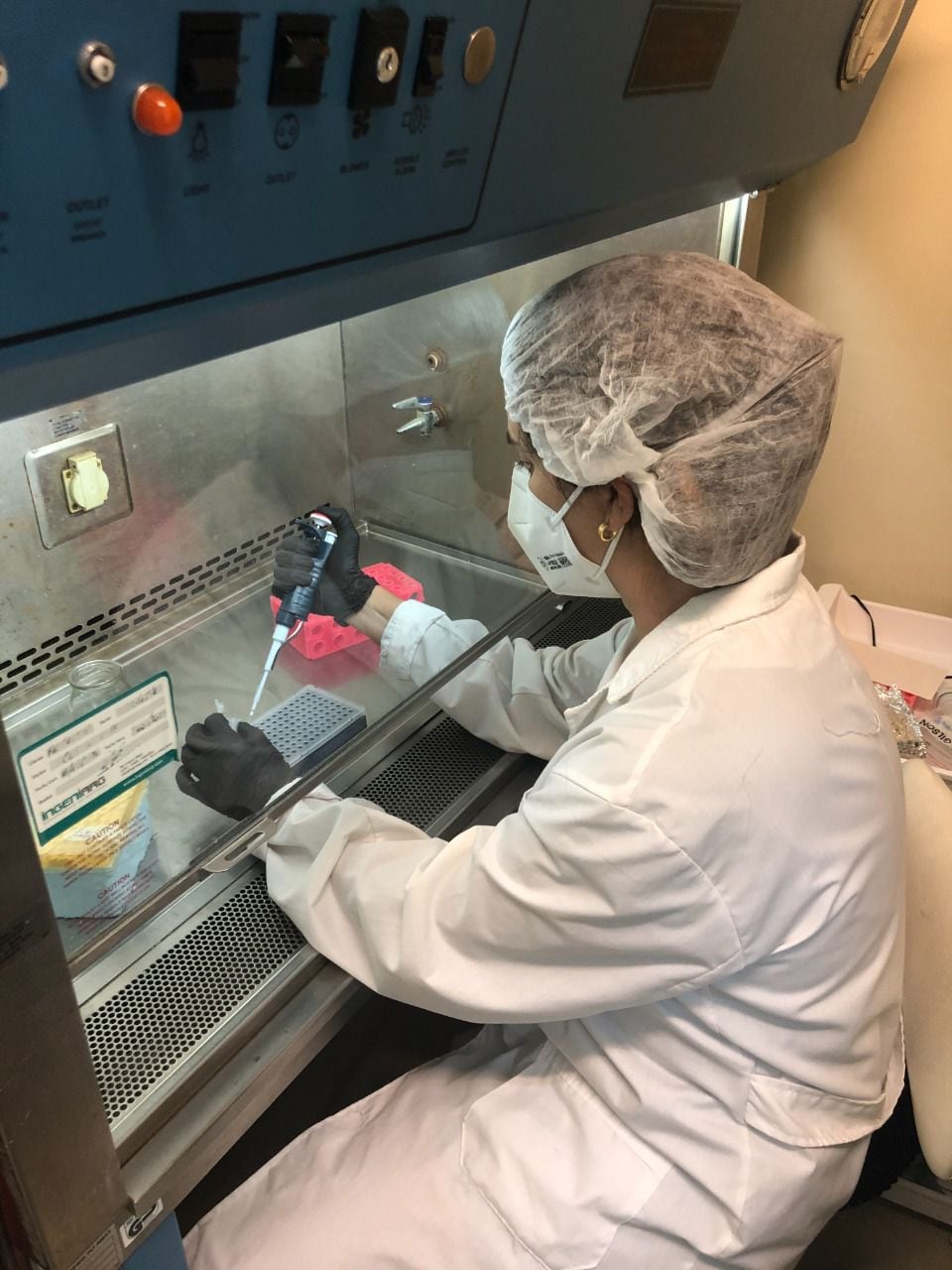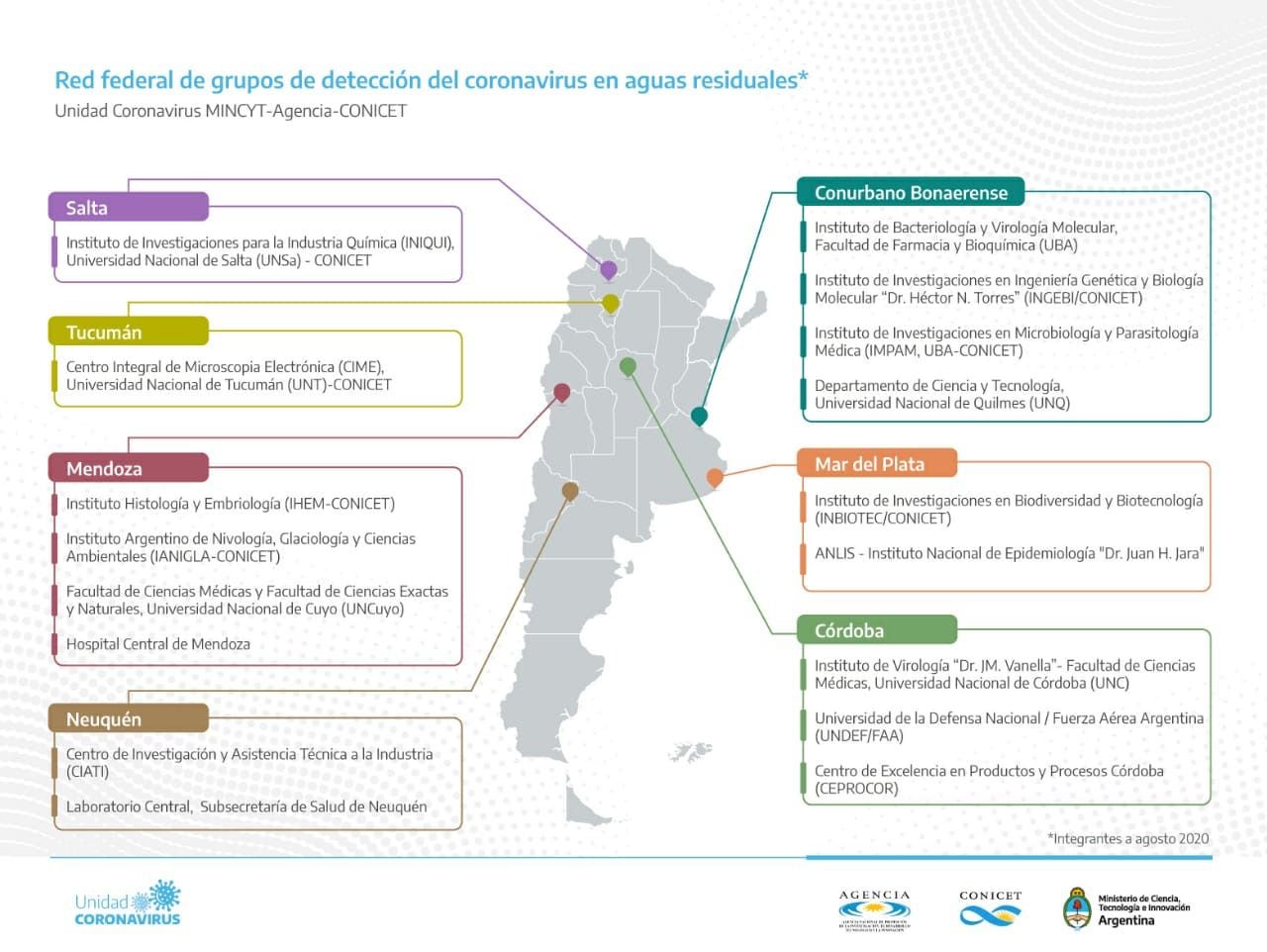
Scientific studies to learn more about the coronavirus do not stop, while the pandemic continues its course and the world is experiencing a new wave of outbreaks due to the expansion of the Ómicron variant and the BA.2 subvariant.
One of the main weapons to defeat it is the planning and study of the behavior of the virus in a society, region or country. Through swabs, it is possible to know the levels of transmission of SARS-CoV-2, by carrying out millions of swabs. But there is another effective method to know how the virus travels and how strong its viral load is. And it is also through the analysis of sewage waste.
“We can detect the virus by performing saliva tests or swabs on the mucous membranes, but also by analyzing sewage waste water, since through fecal matter, the virus is also expelled from the body,” Dr. Viviana Mbayed, associate professor at the Chair of Virology from the Faculty of Pharmacy and Biochemistry (FFyB) of the UBA and researcher at CONICET.

According to the expert virologist, wastewater collects household waste from the population that is dumped into a sewage network. Many people infected with SARS-CoV-2 not only excrete the virus through their respiratory tract, but also through fecal matter.
The authors of the study found that variations in the levels of genetic material of the novel coronavirus in sewage samples over time reflected, and even anticipated, the rise or fall in reported cases of infection. “When there was an increase in cases, this was reflected in our measurements as a rise in virus concentration for that period, and so did the declines,” said the expert, who together with a team of 5 other scientists quantified the concentrations of SARS-CoV-2 genetic material in wastewater samples from four points in the Buenos Aires region between June 2020 and April 2021 and found a “very good” correlation with reported cases of infection.
“In the current COVID-19 pandemic, wastewater surveillance of the SARS-CoV-2 genome has been used to complement viral epidemiology in different countries. The objective of this paper was to introduce and evaluate this wastewater-based tool in the metropolitan region of Buenos Aires, Argentina”, describe the authors of the study published in the journal “The Science of the Total Environment”.

“We have the key support of the Provincial Agency for Sustainable Development (OPDS) of the Province of Buenos Aires, the Water Authority (ADA) and Aguas Bonaerenses S.A. (ABSA) to conduct research at four wastewater sampling points in locations in the south and north of the conurbano (two in the south, in San Vicente and Alejandro Korn, and two in the north, in San Francisco and Sao Paulo. For the coordination of these entities, the Ministry of Science collaborated a lot,” said Mbayed, who has been studying viruses in wastewater for a long time before the current pandemic.
“There is a whole line of research that our team has been carrying out in the study of wastewater-based epidemiology, for example with norovirus (diarrhea), adenoviruses, and polyomaviruses. Based on the call for projects from the R&D Agency of the Ministry of Science, we presented ourselves to obtain a subsidy in this COVID-related research. A more complete dimension has been taken of the importance of these studies for the epidemiological knowledge of infections. This applies to other infections that circulate in the population, such as the circulation of the hepatitis A virus. And how mass vaccination had an impact on the reduction of positive cases in the samples detected in the tributaries years ago,” the expert concluded.
Mbayed and team had to adapt molecular techniques to establish not only the presence of the genetic material of the new coronavirus in sewage samples but to be able to determine the quantity. “The published work reflects the results of the first nine months of sampling, but samples are still collected and analyzed, to maintain a monitoring of what happens with the virus from a population perspective. We are also addressing the analysis of the dynamics of viral variants in these samples,” he added.

The CONICET scientist indicated that measuring the levels of the genetic material of the new coronavirus in sewage waters not only complements epidemiological information but also allows the evaluation of the results of measures taken to contain the pandemic. “These studies can be applied to very large population clusters, but also to very restricted housing areas: a neighborhood, a hospital, a school. And in this way, it could be evaluated if there is viral circulation in a defined area. By the time there is very low viral circulation, wastewater monitoring could be a warning if there is an increase in virus concentrations,” said Mbayed.
The virologist added that since the virus is excreted in fecal matter even in asymptomatic cases of infections, “we will be able to continue to detect its presence in the waters, even if the virus circulates mainly asymptomatically in the population.”
Fellows from CONICET and the National Agency for the Promotion of Research, Technological Development and Innovation (R&D&I Agency) such as Melina Barrios, Sofía Díaz and Carolina Olea, CONICET researchers such as Carolina Torres and María Dolores Blanco Fernández, all professors from the Chair of Virology at the Faculty of Pharmacy and Biochemistry of the UBA. And Damián Costamagna, from ADA and staff from OPDS and ABSA, collaborated.
KEEP READING:
Últimas Noticias
Debanhi Escobar: they secured the motel where she was found lifeless in a cistern

The oldest person in the world died at the age of 119

Macabre find in CDMX: they left a body bagged and tied in a taxi
The eagles of America will face Manchester City in a duel of legends. Here are the details

Why is it good to bring dogs out to know the world when they are puppies




